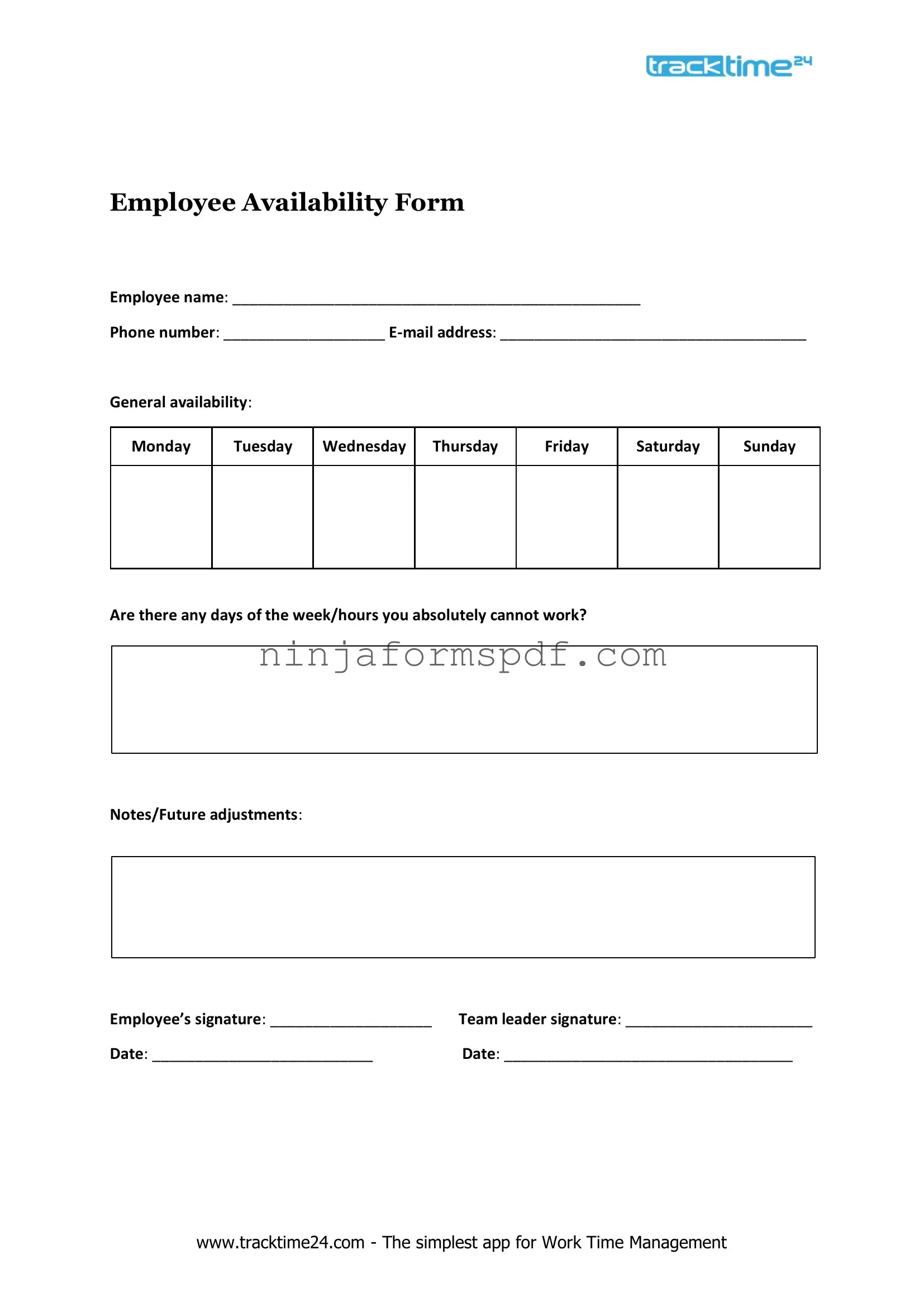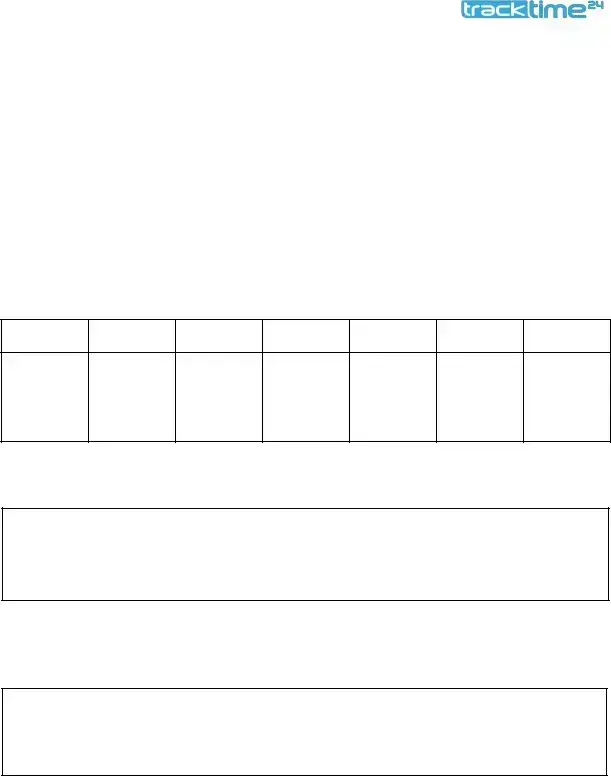What is an Employee Availability form?
An Employee Availability form is a document used by employers to gather information from their employees regarding the times and days they are available to work. This form allows for efficient scheduling, ensuring that shifts are covered without overburdening any single employee. It usually includes sections for personal information, preferred work hours, and any time-off requests.
Why do employers need to use an Employee Availability form?
Employers use these forms to streamline the scheduling process. By understanding when employees are available to work, managers can assign shifts in a way that matches business needs while respecting employee limitations and preferences. This consideration helps in reducing conflicts, improving morale, and ensuring that the workplace operates smoothly and efficiently.
How often should employees update their availability?
Employees are encouraged to update their availability as often as necessary, particularly when their circumstances change. For many workplaces, it's common practice to request updates on a seasonal basis or at least every few months. Regular updates ensure that scheduling remains relevant to both the employee's and employer's current needs. Communicating any availability changes as soon as possible helps in maintaining operational efficiency and fairness in shift assignments.
Can an employee's availability affect their work hours?
Yes, an employee's availability can significantly impact their assigned work hours. Employers typically schedule employees based on the availability they provide, balancing business needs with employee preferences. Limited availability may result in fewer work hours, while more open availability could potentially lead to more shifts. It's crucial for employees to carefully consider their availability to align with their desired work hours.
What happens if an employee's availability changes due to unforeseen circumstances?
When an employee’s availability changes unexpectedly, it's important for them to communicate this change to their employer or manager as soon as possible. Employers usually understand that emergencies and unforeseen circumstances can occur and are often willing to adjust schedules accordingly. Open communication is key to finding a solution that works for both the employee and the employer.
Are there legal considerations employers must be aware of when handling Employee Availability forms?
Yes, when handling Employee Availability forms, employers must be aware of various legal considerations. These include compliance with labor laws related to work hours, overtime, and minimum wage. Additionally, employers should be mindful of discrimination laws to ensure that scheduling practices do not unfairly disadvantage any employee or group of employees based on age, race, gender, or any other protected characteristic. It's crucial for employers to apply scheduling policies uniformly and fairly to all employees.

